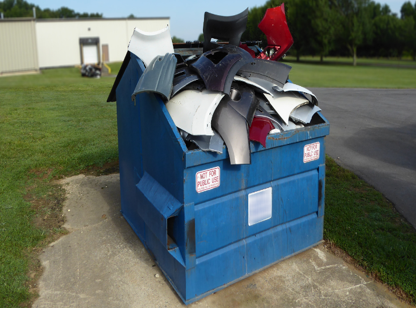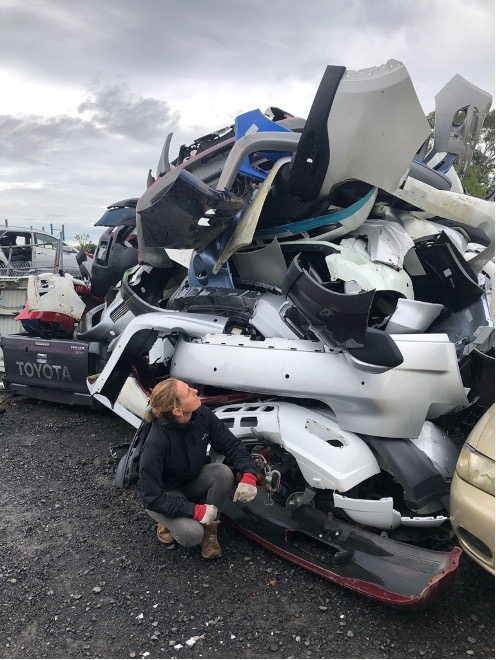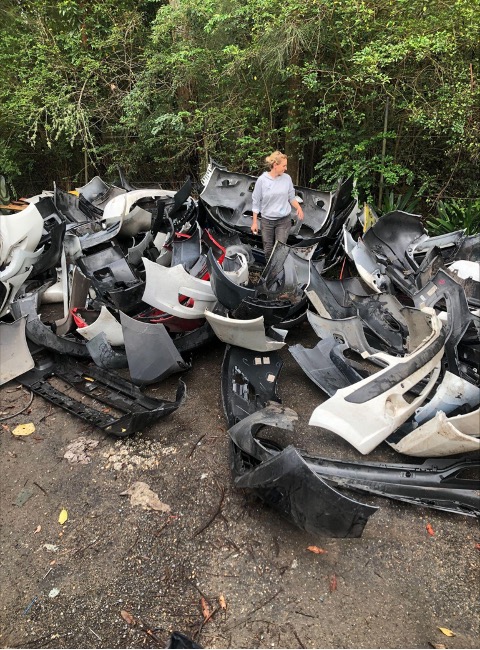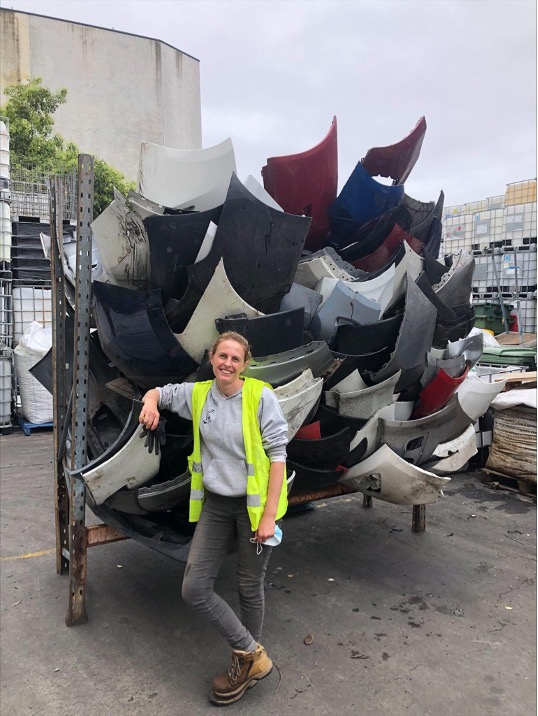
Does Australia have a plastic waste problem?
Annually, Australia generates 3.5 million tonnes of plastic waste with only 9% of this being recycled (ABS, 2020). On average 130 kg of plastic is used each year per person (WWF). However, the most significant contributors to plastic waste derive from the manufacturing and construction sectors which make up 32% of the waste production (WhatASleep, 2020). These statistics are concerning given that the space available in landfills is limited and pollution caused by plastic waste is threatening our natural environment and human health
What part does the Australian Automotive Industry play in this plastic pollution problem?
Plastic is the second most common material found in the modern car with polypropylene being the most popular vehicle plastic. Polypropylene (PP). PP has the symbol number 5, and is used for items such as shampoo or medicine bottles, and plastic parts for machinery and is widely used in the automotive industry for items such as car bumper bars. Whilst plastic in vehicles has its advantages such as reduced car weight, reduced fuel consumption, and increased safety, unfortunately when this plastic reaches the end of its life it ends up in a landfill To give you an understanding of the enormity of the issue, in 2019 The Australian automotive industry consumed 196,800 tonnes of plastic and only recovered 1.9% of this. That is a lot of plastic waste.

Smash Repair Business, just one part of the entire Automotive Industry.
Let’s look at one sector of the industry, smash repair shops. If we crash our car we take it to our local smash repair or panel beat shop for repairs. With 12,600 smash repair businesses in Australia, there are a lot to choose from. With plastic making up 50% of the volume of new cars, when a vehicle accident occurs it is likely we will need to replace or repair some part of the vehicle that is plastic. One business owner, Craig from North Point Motor Body Repairs, said that when a polypropylene plastic car bumper bar, located at the front or the rear of any vehicle, gets scratched or damaged it is almost always replaced because they are simply too difficult to repair and much cheaper to replace.
Where is all this automotive plastic waste going?
Well, I am quite happy to say that in the Hornsby Shire 52.6% of scrap plastic car bumper bars are being recycled due to the proximity of Sydney-based recyclers who collect this bulk waste item. However, according to BoxHead Plastics survey in 2021, this still leaves a whopping 20364kg of scrap plastic bumper bars going to landfills. And in the neighboring shire, Central Coast Council, the recycling rate was almost zero because there are no services that collect and recycle plastic car bumpers leaving businesses no option but to put them into landfill.

There is a solution
Even though the overall national plastic recycling rate is shockingly low and the Australian automotive industry plastic recovery rate is even lower, there is a solution. Polypropylene (PP) car bumpers are abundant, the polymer type is easily recycled and remanufactured and it can all be achieved on Australian soil. Collecting and recycling this bulk waste plastic, whilst sometimes problematic and almost always expensive, Boxhead Plastics volunteer army is determined to see every single scrap plastic bumper in Australia recycled and remanufactured into the product. And they are doing that one car bumper bar at a time.

